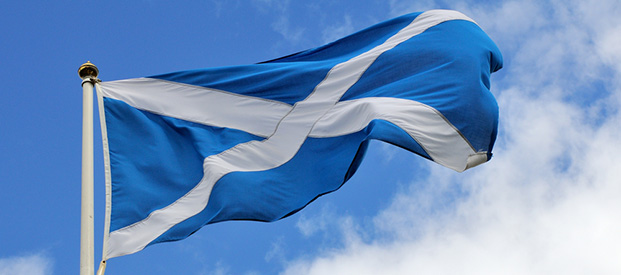St Andrew’s Day
With St Andrew’s Day upon us today, 30th November, we take a look at the history surrounding this famous day. When Scotland adopted Saint Andrew as its patron saint, his symbol, the diagonal cross, or saltire, became the basis for the Scottish flag. But why the diagonal cross?
It is said that when Saint Andrew – a fisherman from Galilee and one of Jesus’ first apostles – was sentenced to crucifixion by the Romans, he protested that he was not worthy to die on a cross like Jesus. Instead, he was crucified on the diagonal cross.
The diagonal cross later played its part in Scottish history when, on the eve of a battle against a large Saxon army, King Angus of the Picts had a dream. He dreamed that he would see a cross in the sky and then conquer his enemies. The next morning, looking into the bright light of the sun, King Angus saw the saltire cross. Taking confidence from this vision, he and his men won the battle. It was after this victory near the village of Athelstaneford in 832AD, that Saint Andrew and the saltire became symbols of Scotland.
Legend tells that the relics of the saint had been brought to Scotland around 347AD by Saint Rule (also called Saint Regulus), who journeyed from Greece with six nuns and monks. The travellers were shipwrecked off the east coast of Scotland, and deposited the relics at the town of Kilrymont, now called St Andrews. Here the cathedral – for seven centuries the largest building in Scotland – became a great centre of religious life, attracting pilgrims from all over Europe.
Saint Andrew is also patron saint of several other countries including Greece, Romania, Russia and Ukraine.
Celebrations
Saint Andrew’s Day, on 30 November, is the first of Scotland’s winter celebrations, to be followed by Hogmanay festivities at New Year and Burns’ Night in January, with many events held on and around the day in celebration.
In St Andrews, the historic golf links plays host to the first ever St Andrews versus Rest of the World golf match, a friendly, fun event open to all golfers. There’s a festival of Scotland’s history and events indoors and outdoors with live music, an open-air ceilidh, pipe band procession and superb local food and produce.
In Edinburgh, music, dancing, song and ice skating displays are all part of the free entertainment, appropriately in St Andrew Square, while traditional ceilidhs and storytelling take place elsewhere.
Glasgow celebrates with its St Andrew’s Party with Phil and Aly, a night of jigs, reels and banter with two of Scotland’s top folk musicians and the Royal Scottish National Orchestra. The weekend’s events are rounded off with a fantastic light display. Oban puts on a Winter Festival complete with Tartan Day and haggis making, while across the whole of Scotland, everyone celebrates this national day in many ways.
Back at Athelstaneford, the site of that famous battle, the tiny National Flag Heritage Centre marks the day with a special free opening and an audio-visual dramatisation of the historic moment when King Angus and his army first saw the saltire in the sky.










